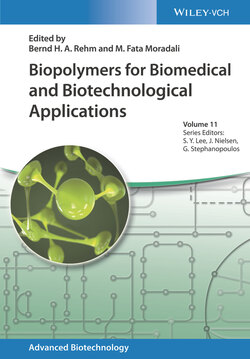Читать книгу Biopolymers for Biomedical and Biotechnological Applications - Группа авторов - Страница 35
2.6 Bioactive Polysaccharides from Microalgae: An Emerging Area
ОглавлениеMicroalgae (including cyanobacteria) can use CO2 as carbon source and incorporate it in complex organic molecules, accounting for nearly half of CO2 capture by photosynthetic organisms annually. Their growth requirements are quite simple: a seawater medium supplemented with a source of nitrogen (apart from nitrogen‐fixing microorganisms), phosphate, iron, magnesium, calcium, and other minor salts [174]. As photosynthetic organisms, no carbon source is added to the cultivation medium; thus less wastewater is generated at the end of the process. Furthermore, algae cultivation is possible with non‐potable water and using the sunlight, which contributes to a more ecological and economical process [68].
Currently, there are more than 30 000 known species of microalgae [175] that are present in different evolutionary lines and have contrasting ecological requirements, meaning this group has an enormous metabolic diversity and great potential for biotechnology. In fact, microalgae production is an emergent market with an expected yearly growth of 10% [6]. Besides the use of biomass as feed in aquaculture and livestock production [176,177], microalgae are the source of high‐value products, such as natural pigments (e.g. β‐carotene and astaxanthin), polyunsaturated fatty acids, proteins, and antioxidants, that are commercialized mainly for the nutraceutical [178] and skin care [179] industries. Moreover, microalgae are increasingly investigated as a new sustainable and environmentally friendly alternative to fossil fuel resources, since they accumulate high amounts of lipids and carbohydrates that can be used as feedstock for biofuel production [180,181]. However, almost all commercial microalgae products are obtained from the biomass, and only recently their relevance as producers of valuable polysaccharides has started to be considered.
